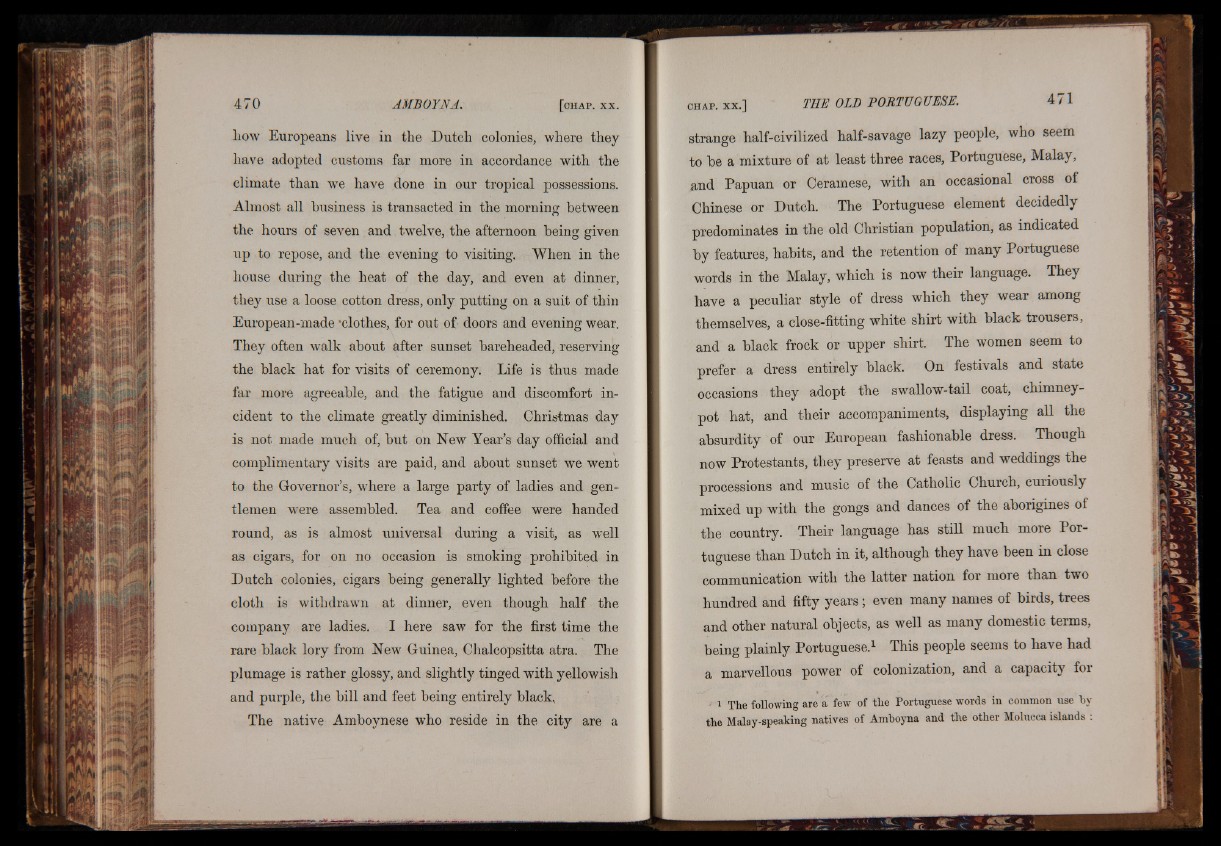
liow Europeans live in the Dutch colonies, where they
have adopted customs far more in accordance with the
climate than we have done in our tropical possessions.
Almost all business is transacted in the morning between
the hours of seven and twelve, the afternoon being given
up to repose, and the evening to visiting. When in the
house during the heat of the day, and even at dinner,
they use a loose cotton dress, only putting on a suit of thin
European-made ‘clothes, for out of doors and evening wear.
They often walk about after sunset bareheaded, reserving
the black hat for visits of ceremony. Life is thus made
far more agreeable, and the fatigue and discomfort incident
to the climate greatly diminished. Christmas day
is not made much of, but on New Year’s day official and
complimentary visits are paid, and about sunset we went
to the Governor’s, where a large party of ladies and gentlemen
were assembled. Tea and coffee were handed
round, as is almost universal during a visit, as well
as cigars, for on no occasion is smoking prohibited in
Dutch colonies, cigars being generally lighted before the
cloth is withdrawn at dinner, even though half the
company are ladies. I here saw for the first time the
rare black lory from New Guinea, Chalcopsitta atra. The
plumage is rather glossy, and slightly tinged with yellowish
and purple, the bill and feet being entirely black,
The native Amboynese who reside in the city are a
strange half-civilized half-savage lazy people, who seem
to be a mixture of at least three races, Portuguese, Malay,
and Papuan or Ceramese, with an occasional cross of
Chinese or Dutch. The Portuguese element decidedly
predominates in the old Christian population, as indicated
by features, habits, and the retention of many Portuguese
words in the Malay, which is now their language. They
have a peculiar style of dress which they wear among
themselves, a close-fitting white shirt with black, trousers,
and a black frock or upper shirt. The women seem to
prefer a dress entirely black. On festivals and state
occasions they adopt the swallow-tail coat, chimneypot
hat, and their accompaniments, displaying all the
absurdity of our European fashionable dress. Though
now Protestants, they preserve at feasts and weddings the
processions and music of the Catholic Church, curiously
mixed up with the gongs and dances of the aborigines of
the country. Their language has still much more Portuguese
than Dutch in it, although they have been in close
communication with the latter nation for more than two
hundred and fifty years; even many names of birds, trees
and other natural objects, as well as many domestic terms,
being plainly Portuguese.1 This people seems to have had
a marvellous power of colonization, and a capacity for
i The following are a few of the Portuguese words in common use hy
the Malay-speaking natives of Amboyna and the other Molucca islands :